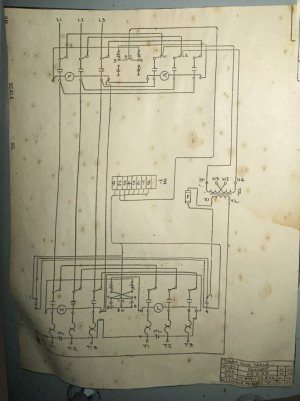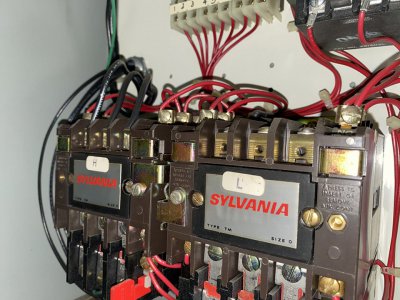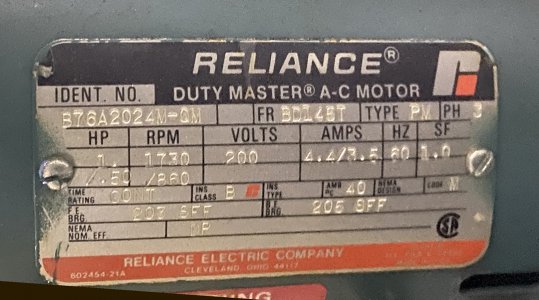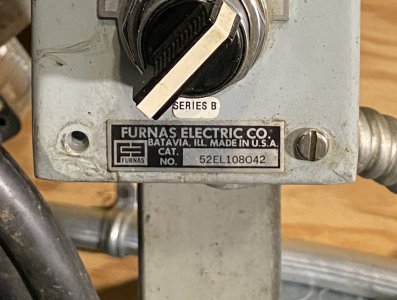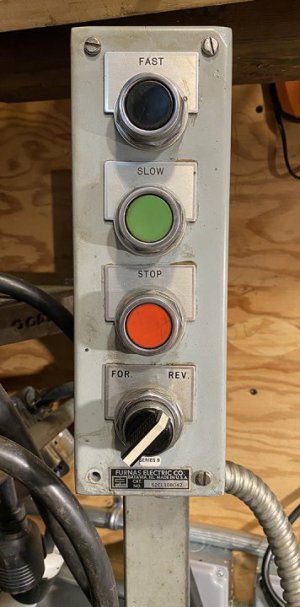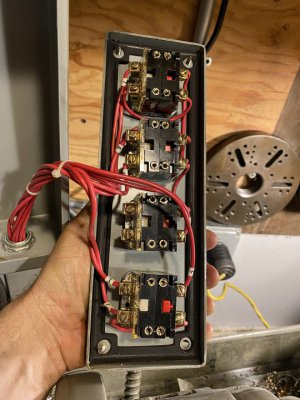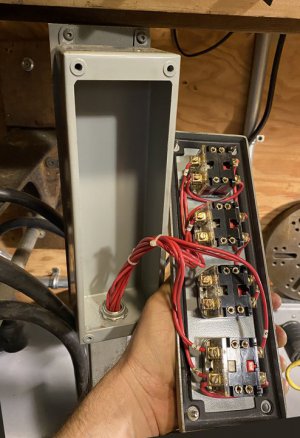- Joined
- Jan 11, 2013
- Messages
- 1,821
Hi Hobby Machinist Folks
I have a late model South Bend Heavy (10L terms spelled out for searchability) with the "High/Low," 3 phase, two speed motor. In the 1980's, the Reliance two-speed motors were only 1hp in "high", not the 1-1/2hp they were in decades past.
To the problem. I was using the lathe just fine for years. Today, after hitting the Off button and shutting the spindle down after a cut, I hit the button for the next cut, and nothing happened. None of the buttons do anything now. I tried in reverse, forward, High, Low. I disconnected the lathe from the line and reconnected it. I let it sit for a while and tried again. I searched the motor for an overload trip button, or overheat button, and nothing.
I am running this lathe, along with a Bridgeport, on a 5hp PhaseMaster Rotary Converter which are all still working just fine.
-There is a switch panel on a stalk behind the headstock with three buttons: High, Low, and Stop, and one knob to twist for Forward and Reverse.
-There is a sizable (OEM South Bend) Sylvania panel hanging on the back of the lathe with what appear to me to be four Sylvania magnetic contactors: two for "Forward" and "Reverse", and two more for "High" and "Low."
-There is an Impervitran “Industrial Control Transformer” B150M15, which I believe powers the low voltage switches and the relay/contactor secondary windings.
I don't have the easiest access inside this panel right now, but I found only one 10 Amp, 250 volt fuse in the whole panel, on the Impervitran transformer, which I was able to pull, and appears to have continuity.
I understand the basics of magnetic switches, but am not as familiar with troubleshooting them as I am with other motor controls. I can rewire a reversing drum switch (like on a BP or lathe), but would appreciate some clues where to start to get to the bottom of this. I thought I would ask you folks here the best way to identify the problem. Are there spots that are the best to start with the multimeter?
Pics attached in case it helps
Bernie
text for searches:
Furnas Switch Stalk 52EL108042 Series B
South Bend Wiring Diagram A60-354012
Sylvania T13U030 Contactor Size 0 Type TM 600VAC 18A
Challenger Electrical Controls Lancaster, SC
Impervitran “Industrial Control Transformer” B150M15
FUSE - FNM-1 1 4/10
SC100A 250V
SC10kA 125V
Reliance 1hp 1/2hp Two Speed 3 phase motor
Model B76A2024M-QM
Frame BD145T
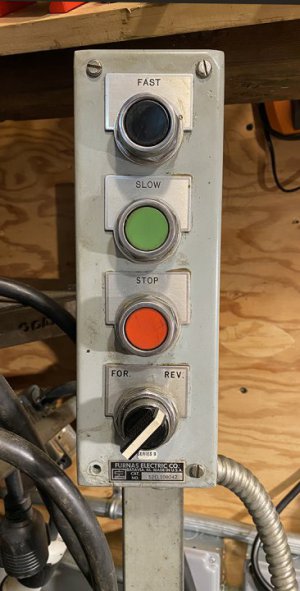
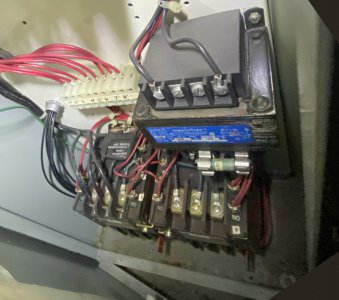
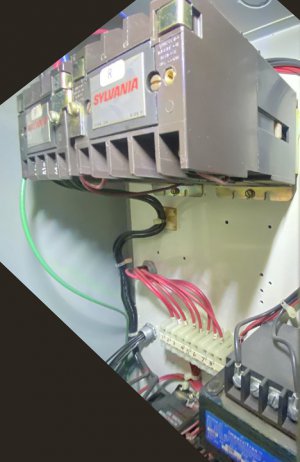
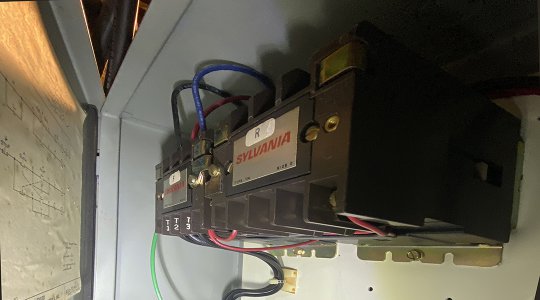
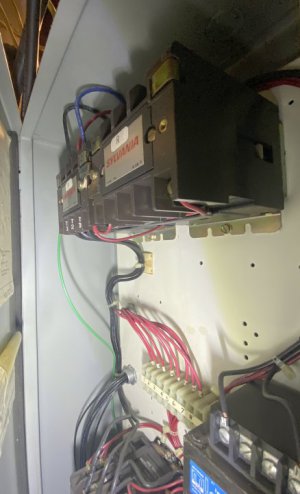
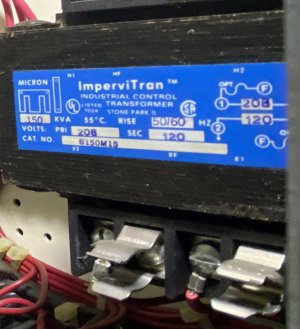
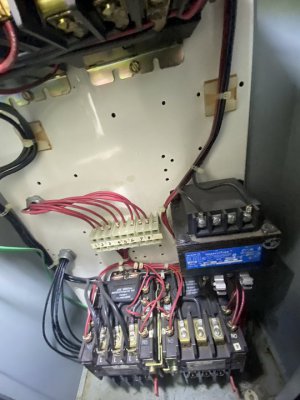
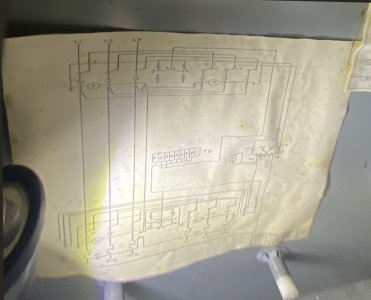
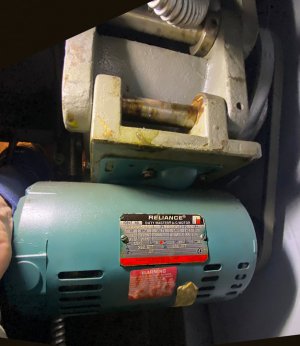
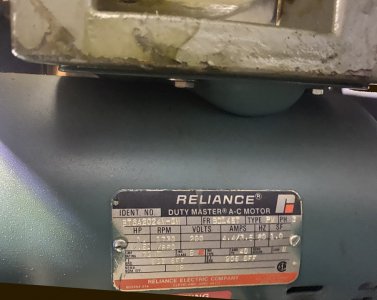
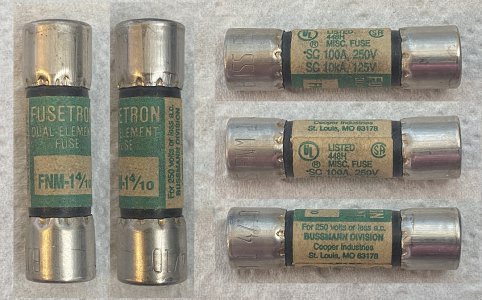
I have a late model South Bend Heavy (10L terms spelled out for searchability) with the "High/Low," 3 phase, two speed motor. In the 1980's, the Reliance two-speed motors were only 1hp in "high", not the 1-1/2hp they were in decades past.
To the problem. I was using the lathe just fine for years. Today, after hitting the Off button and shutting the spindle down after a cut, I hit the button for the next cut, and nothing happened. None of the buttons do anything now. I tried in reverse, forward, High, Low. I disconnected the lathe from the line and reconnected it. I let it sit for a while and tried again. I searched the motor for an overload trip button, or overheat button, and nothing.
I am running this lathe, along with a Bridgeport, on a 5hp PhaseMaster Rotary Converter which are all still working just fine.
-There is a switch panel on a stalk behind the headstock with three buttons: High, Low, and Stop, and one knob to twist for Forward and Reverse.
-There is a sizable (OEM South Bend) Sylvania panel hanging on the back of the lathe with what appear to me to be four Sylvania magnetic contactors: two for "Forward" and "Reverse", and two more for "High" and "Low."
-There is an Impervitran “Industrial Control Transformer” B150M15, which I believe powers the low voltage switches and the relay/contactor secondary windings.
I don't have the easiest access inside this panel right now, but I found only one 10 Amp, 250 volt fuse in the whole panel, on the Impervitran transformer, which I was able to pull, and appears to have continuity.
I understand the basics of magnetic switches, but am not as familiar with troubleshooting them as I am with other motor controls. I can rewire a reversing drum switch (like on a BP or lathe), but would appreciate some clues where to start to get to the bottom of this. I thought I would ask you folks here the best way to identify the problem. Are there spots that are the best to start with the multimeter?
Pics attached in case it helps
Bernie
text for searches:
Furnas Switch Stalk 52EL108042 Series B
South Bend Wiring Diagram A60-354012
Sylvania T13U030 Contactor Size 0 Type TM 600VAC 18A
Challenger Electrical Controls Lancaster, SC
Impervitran “Industrial Control Transformer” B150M15
FUSE - FNM-1 1 4/10
SC100A 250V
SC10kA 125V
Reliance 1hp 1/2hp Two Speed 3 phase motor
Model B76A2024M-QM
Frame BD145T











Last edited:


